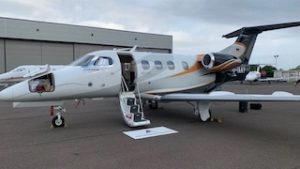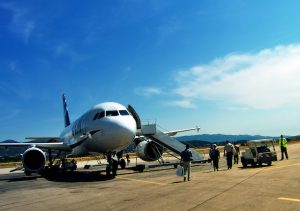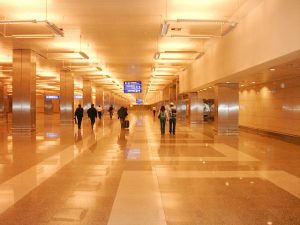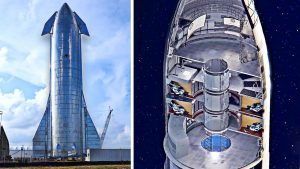6 Important Core Disciplines In Aeronautics
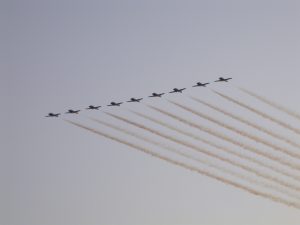 Aeronautics is a branch of engineering and applied science that deals with the study, design, and manufacture of air-capable machines. In today’s rapidly evolving aerospace industry, aeronautics plays a crucial role in shaping the future of air travel, defense, and commercial aviation. The field of aeronautics is deeply interdisciplinary, drawing from a range of scientific and engineering principles to solve complex challenges.
Aeronautics is a branch of engineering and applied science that deals with the study, design, and manufacture of air-capable machines. In today’s rapidly evolving aerospace industry, aeronautics plays a crucial role in shaping the future of air travel, defense, and commercial aviation. The field of aeronautics is deeply interdisciplinary, drawing from a range of scientific and engineering principles to solve complex challenges.
At the heart of aeronautics are 6 core disciplines that work together to create efficient, safe, and reliable aircraft. These core disciplines, aerodynamics, propulsion systems, structures and materials, flight mechanics and stability, avionics and flight control systems, and fluid mechanics and thermodynamics, are the foundation upon which modern aircraft are designed and tested. Understanding these areas is essential for anyone looking to grasp the intricacies of aeronautical engineering.
1) Aerodynamics: Science of airflow in aeronautics
Aerodynamics is a central component of aeronautics and focuses on how air interacts with solid objects, in this case, aircraft. The field is concerned with the forces of lift and drag, which determine an aircraft’s ability to stay in the air and move forward efficiently. In aeronautics, optimizing aerodynamic performance is crucial for improving flight stability, fuel efficiency, and overall aircraft performance.
Aircraft wings, fuselage shapes, and even the smallest design details, like winglets, are all influenced by aerodynamic considerations. Engineers use computational fluid dynamics and wind tunnel testing to model airflow over an aircraft’s surfaces. Through this analysis, they can pinpoint how air behaves when it flows around wings, control surfaces, and the fuselage.
The lift-to-drag ratio is a key metric in aerodynamics. This ratio is the balance between the lift force and drag force. Aerodynamic efficiency is achieved when engineers successfully maximize lift while minimizing drag. This balance directly affects an aircraft’s fuel consumption, cruising speed, and range.
Modern advances in aerodynamics have led to innovations like blended wing bodies, swept wings, and advanced airfoil designs, all of which are aimed at improving efficiency. Furthermore, the future of aerodynamics in aeronautics is moving toward understanding supersonic and hypersonic flight, where airflow behaves differently due to the high velocities involved. Aerodynamics is one of the critical disciplines driving the quest for more efficient, faster, and environmentally friendly aircraft.
2) Propulsion systems: Power behind flight in aeronautics
Propulsion is what powers an aircraft forward, allowing it to take off, cruise, and land. In aeronautics, propulsion systems have evolved dramatically, from the early piston engines used in propeller aircraft to modern gas turbine engines, including turbojets, turbofans, and turboprops. These systems are at the heart of an aircraft’s ability to generate thrust, the force that pushes it through the air.
The principles of propulsion are based on Newton’s Third Law of Motion: for every action, there is an equal and opposite reaction. In aircraft, propulsion systems work by expelling mass (air and fuel) at high speed in one direction, generating thrust in the opposite direction. This concept applies to both jet engines and propeller-driven engines.
In turbofan engines, which are commonly used in commercial aircraft, air is drawn into the engine, compressed, mixed with fuel, and ignited. This combustion process generates a high-velocity exhaust that produces thrust. Turbofans are favored for their fuel efficiency and ability to operate efficiently at high altitudes and long distances.
In contrast, turbojets are used in high-speed aircraft, including military jets. These engines are designed to produce higher thrust levels to enable supersonic speeds. Future advancements in propulsion include the development of hybrid-electric and fully electric engines, which aim to reduce carbon emissions and enhance sustainability in aviation. Engineers are also exploring the use of ramjets and scramjets for hypersonic flight, which could revolutionise air travel and military applications by allowing aircraft to travel at speeds exceeding Mach 5.
3) Structures and materials: Building the backbone of aircraft
The structural integrity of an aircraft is vital to its safety and performance. Aeronautical engineers design aircraft structures that can withstand the stresses of flight, including takeoff, cruising, landing, and extreme weather conditions. The structural components of an aircraft such as the fuselage, wings, landing gear, and empennage—must be strong, durable, and lightweight.
In the early days of aviation, aircraft were built primarily from wood and fabric. However, as flight speeds and altitudes increased, stronger and lighter materials became necessary. Today, **aluminum alloys** are the most common materials used in aircraft structures because they provide a balance of strength and weight. However, there is a growing trend toward using carbon fibre-reinforced polymers and titanium alloys, which offer even greater strength-to-weight ratios and corrosion resistance.
The most significant challenge in aeronautical structures is weight reduction. Engineers are constantly striving to make aircraft lighter to improve fuel efficiency and range. This effort has led to the development of composite materials, which are engineered to be both lightweight and extremely strong. For example, the Boeing 787 Dreamliner incorporates a high percentage of composite materials, making it one of the most fuel-efficient airliners in the world.
Advances in materials science, such as nanotechnology and additive manufacturing, are shaping the future of aeronautical structures. Engineers are exploring the use of smart materials that can change their properties in response to environmental conditions, offering potential benefits for both structural integrity and aerodynamic efficiency.
4) Flight mechanics and stability: Understanding aircraft dynamics
Flight mechanics is the study of how aircraft move through the air and how pilots control these movements. This discipline is fundamental to aeronautics because it governs an aircraft’s ability to perform its intended mission safely. Flight mechanics involves the study of forces and moments acting on the aircraft and how these affect the aircraft’s pitch, yaw, and roll.
Aircraft stability is classified into two categories: static stability and dynamic stability. Static stability refers to the aircraft’s initial tendency to return to equilibrium after being disturbed. Dynamic stability describes the aircraft’s long-term response to a disturbance, such as whether it continues oscillating or eventually returns to level flight.
Control surfaces, such as ailerons, elevators, and rudders, are key components in managing an aircraft’s flight dynamics. These surfaces allow pilots to adjust the aircraft’s orientation and maintain stability. Engineers use principles of aerodynamics and fluid mechanics to design control surfaces that provide precise control without adding unnecessary drag.
Fly-by-wire systems, which replace traditional mechanical controls with electronic ones, have revolutionised flight control in modern aircraft. These systems improve stability, reduce pilot workload, and enhance safety by allowing the aircraft’s computer to assist in making rapid adjustments to control surfaces. This is particularly important in situations where manual control might be less effective, such as during extreme weather or high-speed flight.
5) Avionics and flight control systems: Navigating the skies
Avionics, the electronic systems used in aircraft for communication, navigation, and control, are a critical aspect of modern aeronautics. These systems allow pilots to monitor and control various aircraft functions, from engine performance to flight path management. Avionics systems include autopilot, navigation aids, weather radar, and communication systems.
The role of avionics has expanded significantly with the advent of digital technology. Modern aircraft are equipped with glass cockpits, which use digital displays to provide pilots with real-time data on all aspects of the flight. This data is crucial for safe and efficient operation, especially in challenging conditions like low visibility or turbulent weather.
Flight management systems integrate multiple avionics functions to automate many aspects of flight planning and execution. For instance, the FMS can calculate the most efficient flight path, manage fuel consumption, and optimize aircraft performance based on real-time data. As avionics continue to evolve, future systems will incorporate advances in artificial intelligence and machine learning, enabling even greater levels of automation and safety.
6) Fluid mechanics and thermodynamics: Mastering energy and efficiency
Fluid mechanics and thermodynamics are foundational principles in aeronautics that influence the design of aircraft components such as wings, engines, and fuselages. In aeronautics, fluid mechanics involves the study of how air behaves as it moves over surfaces, while thermodynamics deals with the conversion of energy, particularly in the context of propulsion systems.
The key challenge in fluid mechanics is understanding how air flows over wings and other surfaces, particularly at different speeds and altitudes. Engineers analyse airflow patterns to minimise turbulence and drag, which can reduce fuel efficiency and impair performance. The study of boundary layers, where air interacts directly with the aircraft’s surface, is particularly important for improving aerodynamic efficiency.
Thermodynamics, on the other hand, is crucial for designing efficient propulsion systems. In jet engines, thermodynamic principles govern the combustion process that powers the aircraft. Engineers seek to maximize the energy output from fuel while minimizing heat loss and waste. Advances in thermodynamics have led to more efficient engines that produce more thrust with less fuel, contributing to both economic and environmental sustainability.
Wrapping up
The core disciplines of aeronautics, aerodynamics, propulsion systems, structures and materials, flight mechanics and stability, avionics, and fluid mechanics and thermodynamics, form the foundation of modern aircraft design and operation. As these disciplines continue to evolve, they drive innovation in the aviation industry, leading to safer, more efficient, and more sustainable air travel.
The integration of cutting-edge technologies, such as artificial intelligence, composite materials, and electric propulsion, is transforming the field of aeronautics. Engineers are pushing the boundaries of what is possible, from hypersonic flight to autonomous aircraft. The future of aeronautics holds the promise of faster, greener, and more connected aviation systems, all made possible by advances in these core disciplines.
Aeronautics is not only about building machines that fly. It is also about mastering the science and engineering behind the forces that make flight possible. Through continued research and innovation in these core areas, aeronautical engineers will shape the future of global air travel for decades to come.


